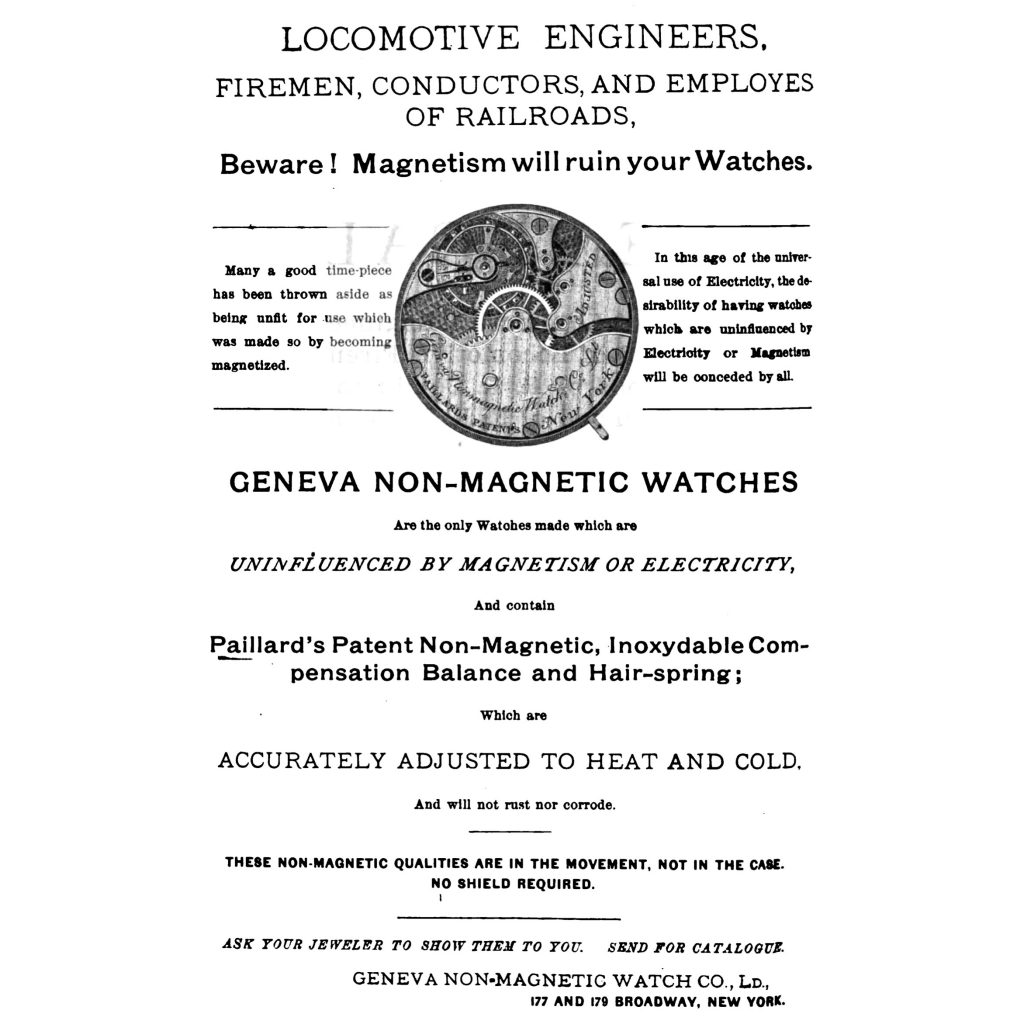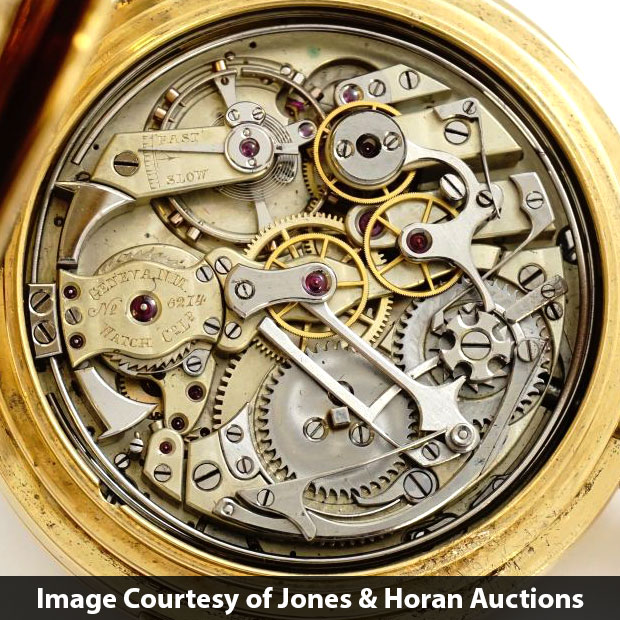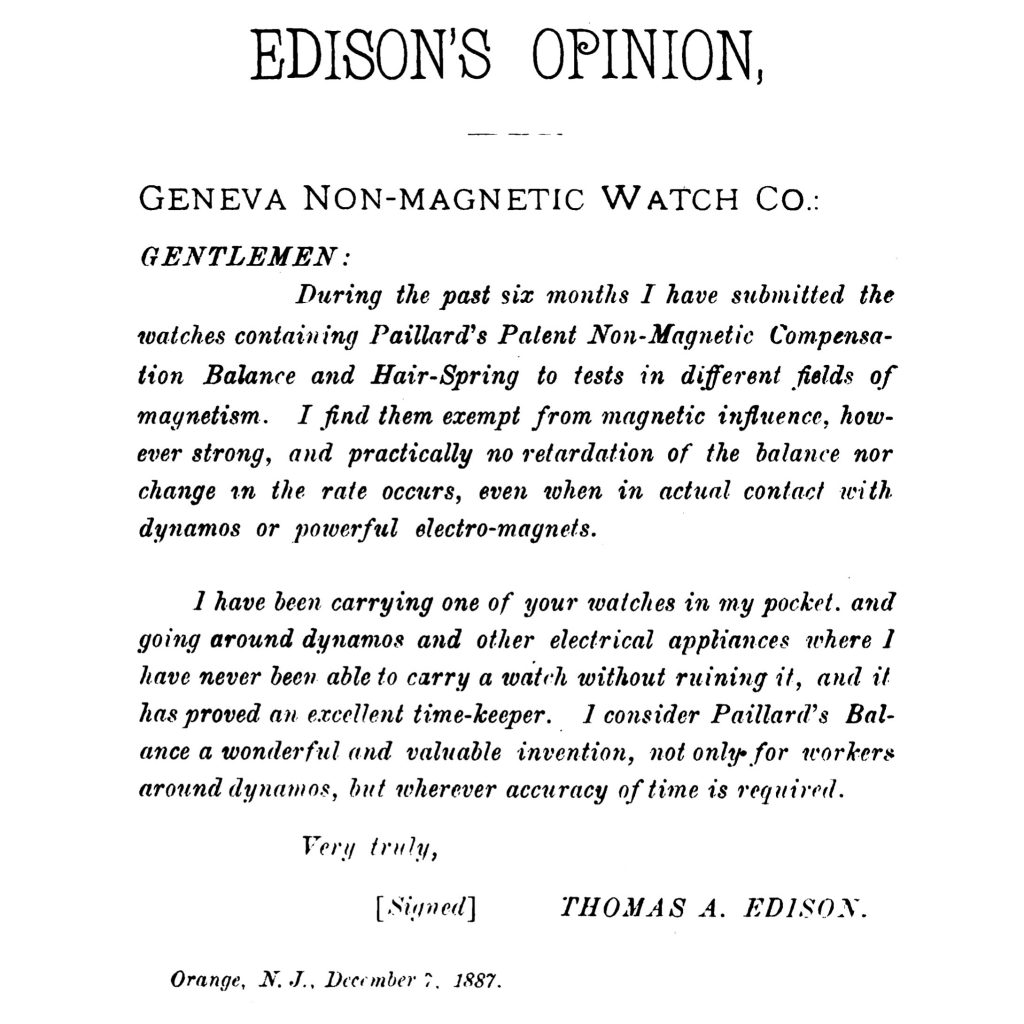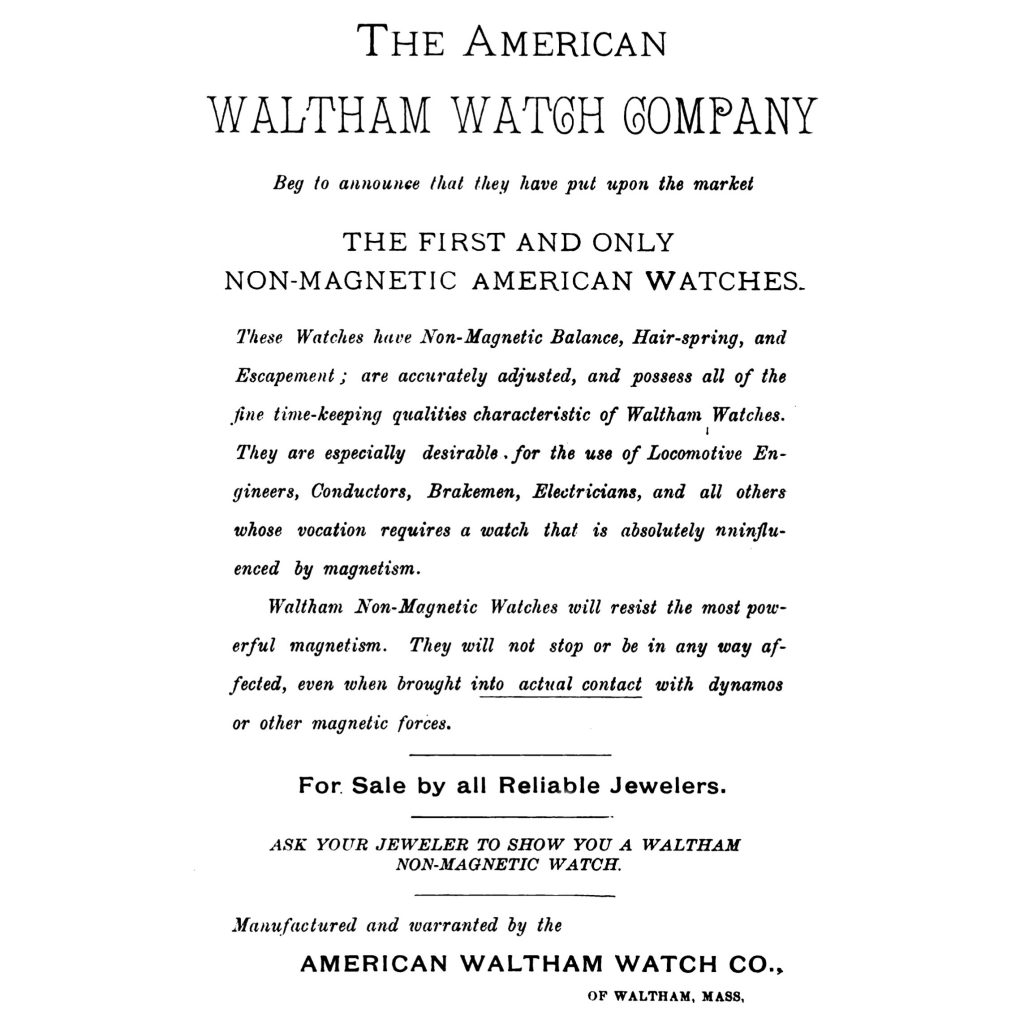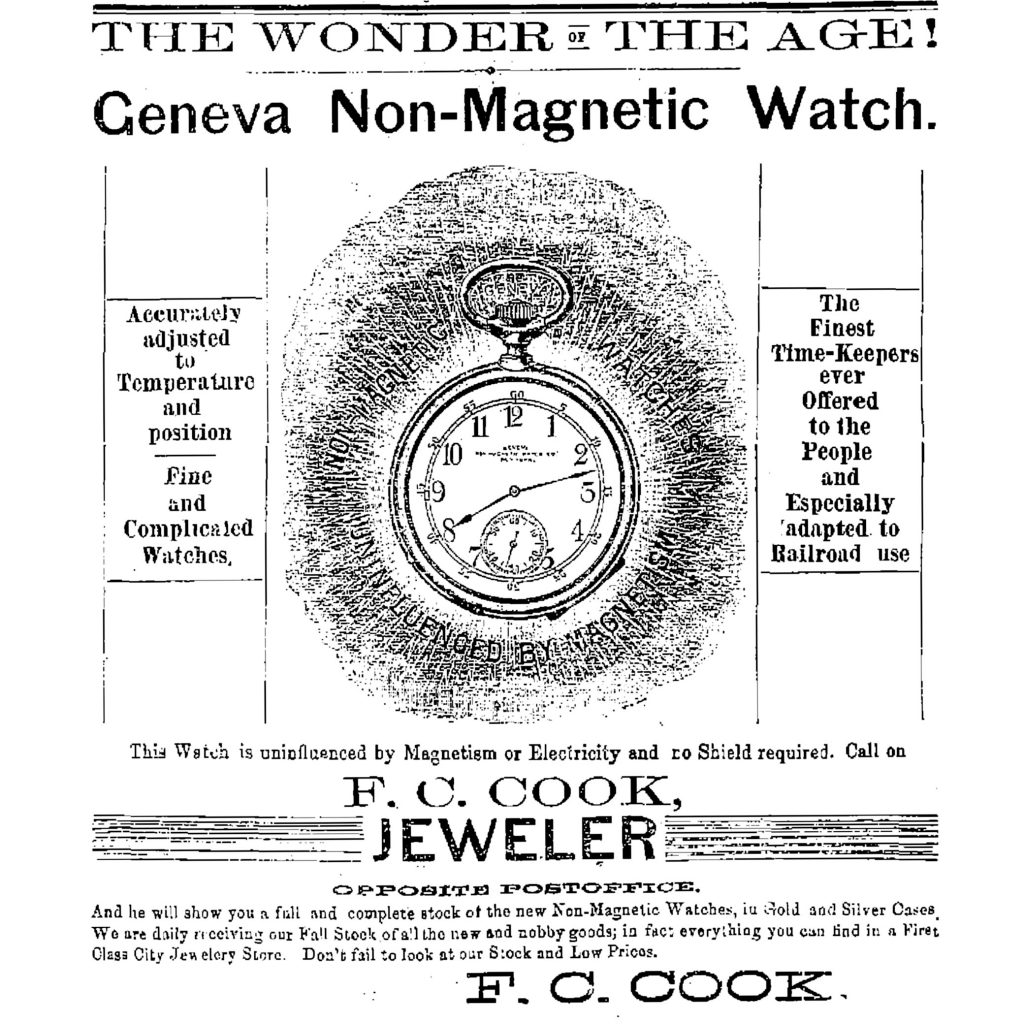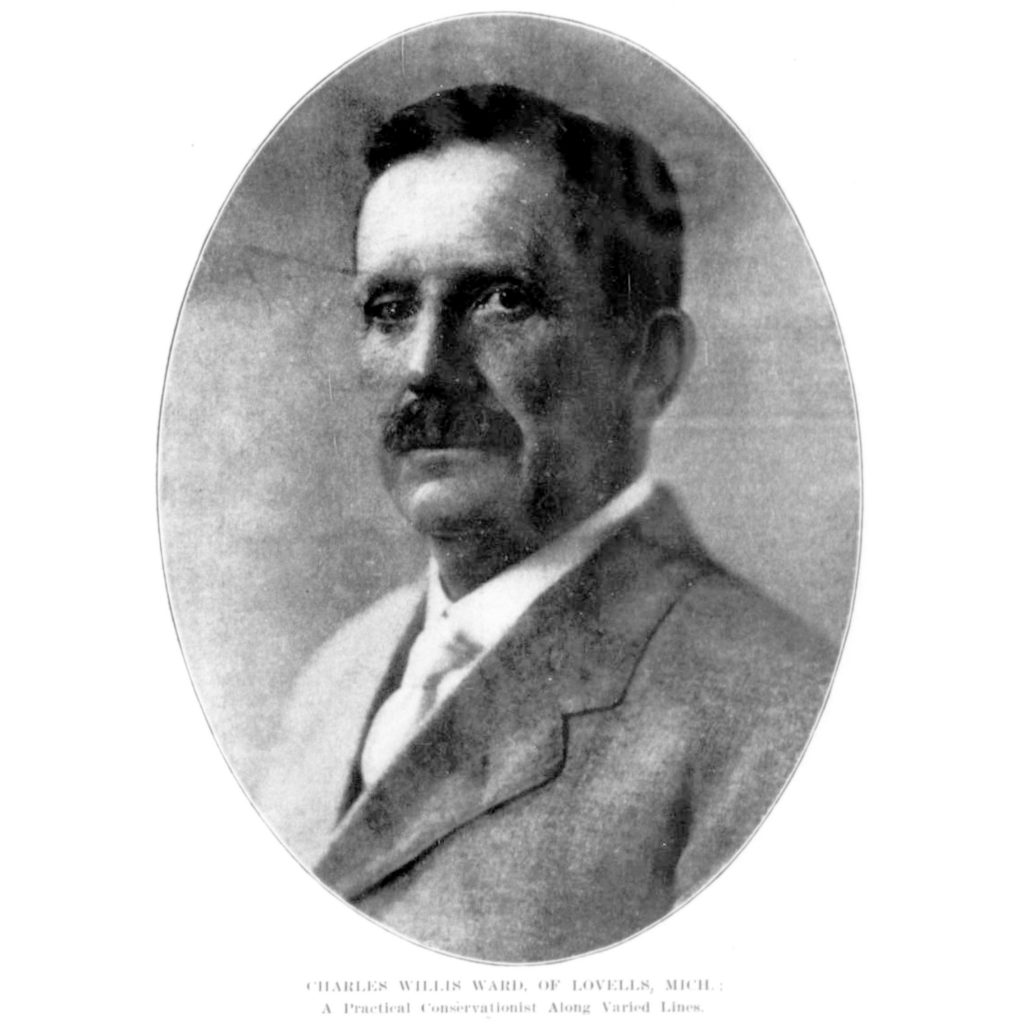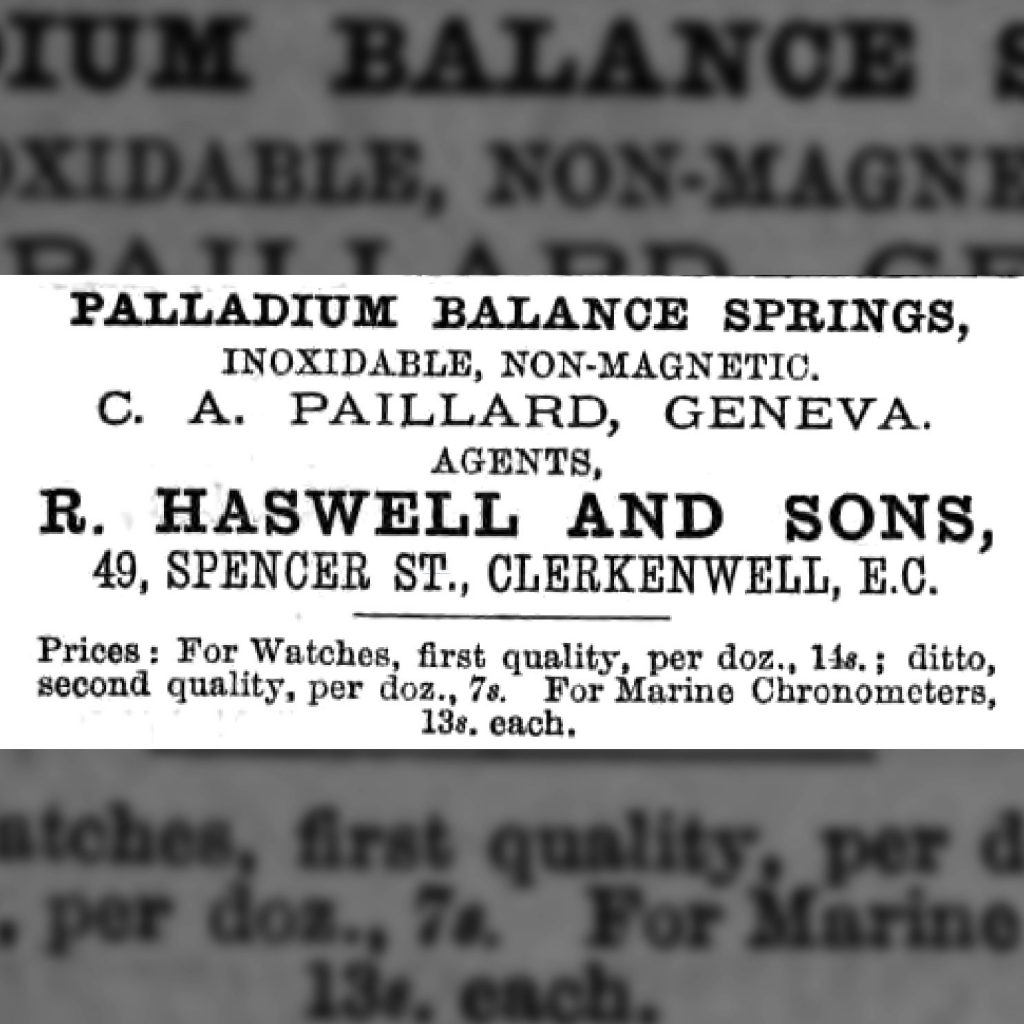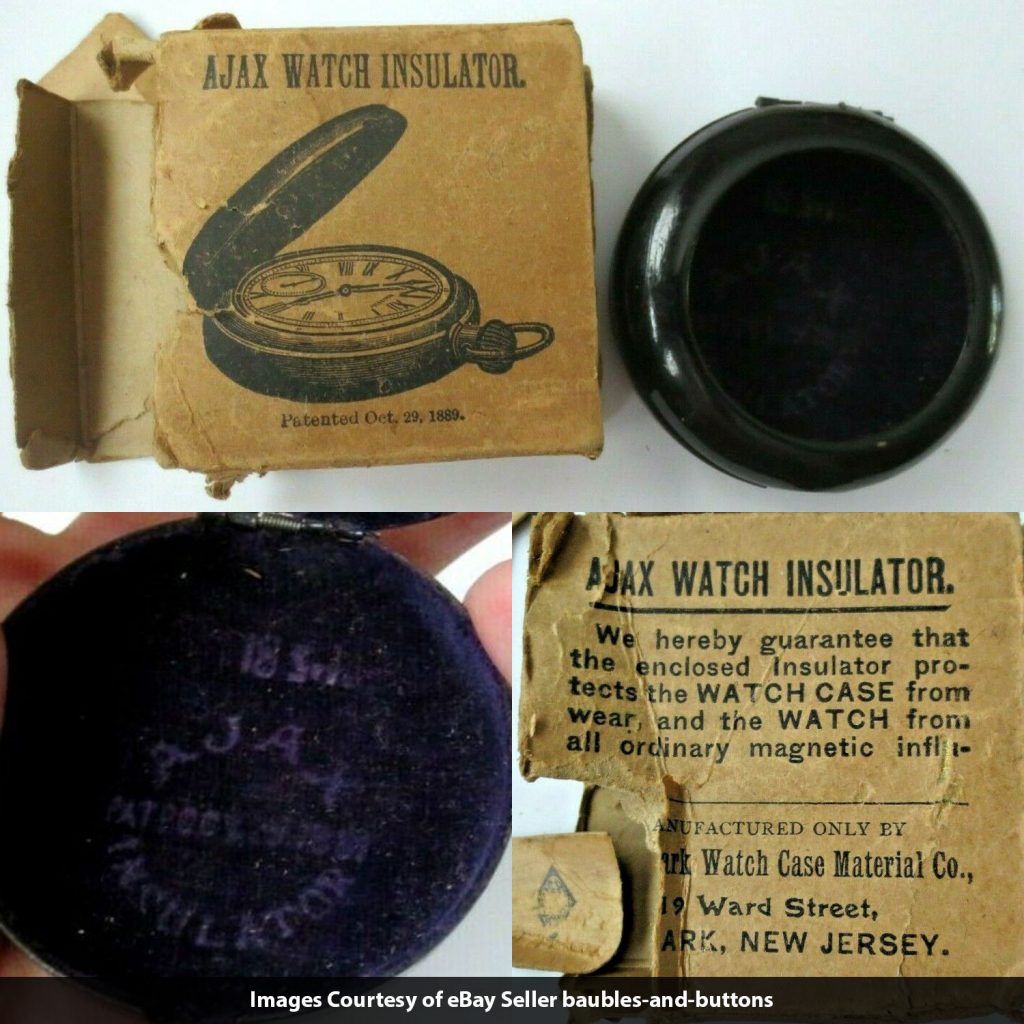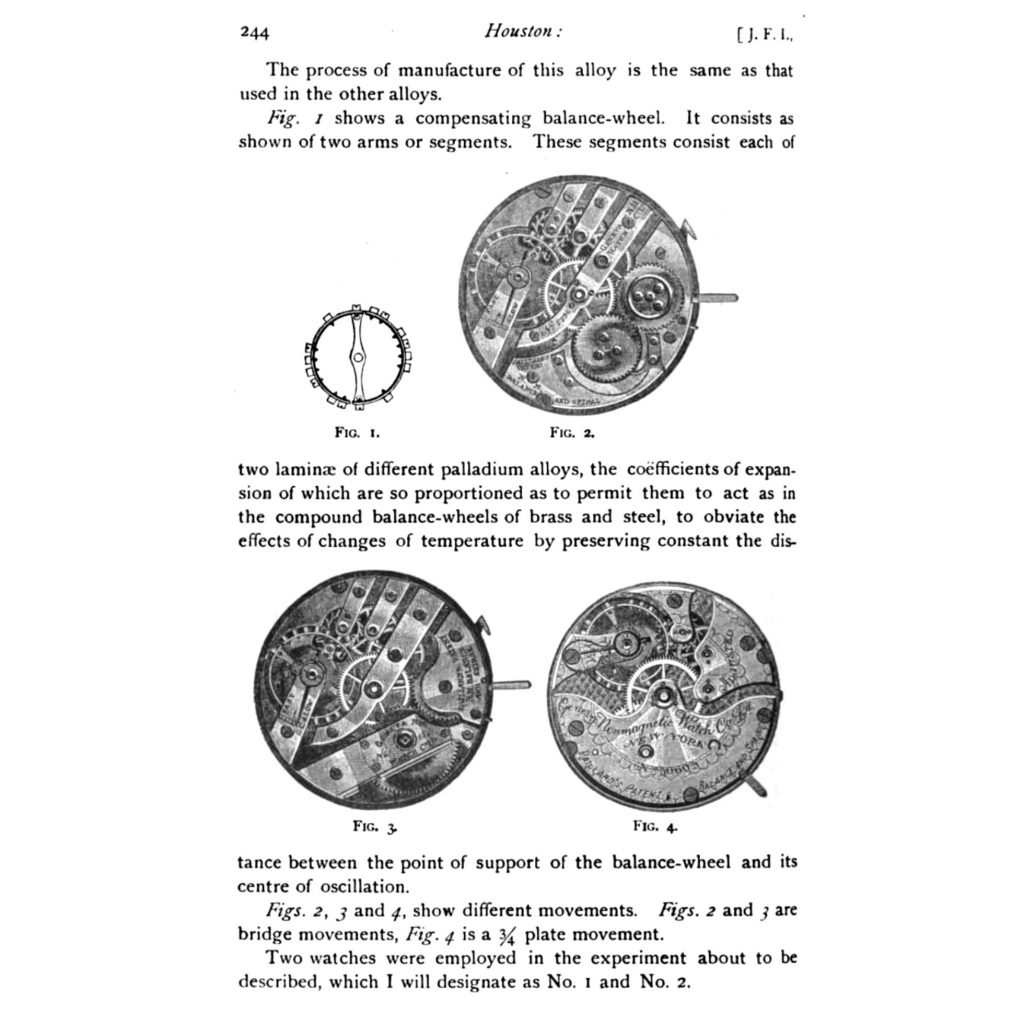
Author: Nathan Moore

Pictured: Geneva Non-Magnetic Watch Company Advertisement, Locomotive Engineers’ Journal, August 1887 As soon as the Geneva Non-Magnetic Watch Company was able to introduce their new watches to the American market,.
Pictured: J.J. Badollet Repeater, Produced for the Geneva Non-Magnetic Watch Company, [Image Courtesy of Jones & Horan Auctions] The Geneva Non-Magnetic Watch Company was initially organized in 1886 to facilitate.
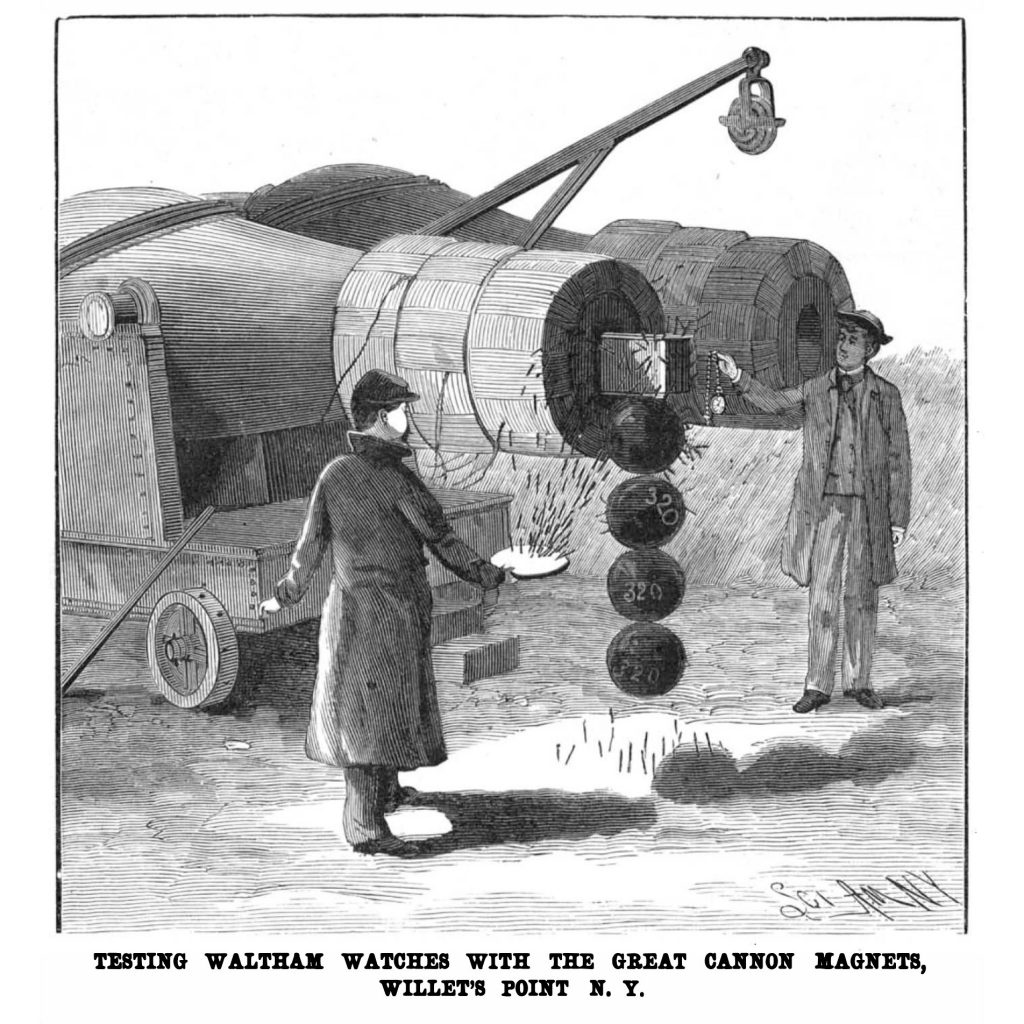
Pictured: Thomas Edison’s Endorsement of the Non-Magnetic Watch Co., Locomotive Engineers’ Monthly Journal, February 1888. The American Waltham Watch Company introduced a non-magnetic watch to compete with the Non-Magnetic Watch.
Pictured: Waltham Non-Magnetic Watch Advertisement, The Locomotive Engineers’ Journal, February 1888. Just as the Non-Magnetic Watch Company launched their innovative non-magnetic watches in the United States, the American Waltham Watch.
Pictured: Charles Willis Ward, Portrait, American Lumberman, October 14, 1911. Shortly after Charles-Auguste Paillard began commercializing his palladium hairspring in 1883, the opportunity for broader production and marketing caught the.
Pictured: Advertisement by R. Haswell and Sons for Paillard’s Palladium Balance Springs, The Horological Journal, July 1883 Charles-Auguste Paillard originally developed palladium alloys for use in fine marine chronometers due.

